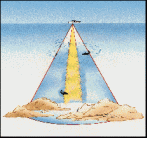We have a an older Lowrance X22A fish finder (1997). Currently have the boat on the trailer for maintenance / cleaning. Is there any way of testing this unit before putting back into the slip?
It powers up fine and shows .5 ft on the display. My brother said it seemed to be erratic the last time he was out. The sounder and line do not show any signs of damage.
If we do have to replace is it worthwhile going with a GPS unit?
We use the boat on inland lakes; same lake on a regular basis. Also have a smart phone with the Navionics app. Any strong reasons for a unit with GPS over using the phone? Obviously convenience would be better; just be frugal with funds whenever possible.
It powers up fine and shows .5 ft on the display. My brother said it seemed to be erratic the last time he was out. The sounder and line do not show any signs of damage.
If we do have to replace is it worthwhile going with a GPS unit?
We use the boat on inland lakes; same lake on a regular basis. Also have a smart phone with the Navionics app. Any strong reasons for a unit with GPS over using the phone? Obviously convenience would be better; just be frugal with funds whenever possible.




















